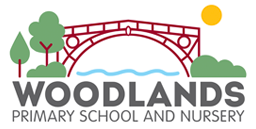Computing

At Woodlands Primary School, we recognise that all pupils are entitled to a broad and balanced Computing education which empowers them to use computational thinking and creativity. Using the National Curriculum as a starting point, we provide a structured, progressive approach to learning how computer systems work, the use of IT, how to stay safe online and the skills necessary to become digitally literate and participate fully in the modern world. We believe that computing is a pivotal part of our curriculum and due to this, we invest heavily in providing up-to-date equipment and software to facilitate regular curriculum access. Woodlands is a well-equipped school; every child in KS2 has access to a laptop, KS1 classes have individual laptops and there are a number of iPads available for use throughout the school. There are also a variety of cameras, digital recording equipment and floor robots to support teaching and learning. The Computing Curriculum is clearly mapped to display progression of learning in knowledge, skills and vocabulary, thus enabling our pupils to know more and remember more.
Aims
The school’s aims are to:
- Meet the requirements of the national curriculum programmes of study for computing at Key Stage 1 and 2.
- Provide a broad, balanced, progressive challenging and enjoyable curriculum for all pupils.
- To use adaptive teaching methods to ensure all pupils can access our Computing objectives.
- Develop pupil’s computational thinking skills that will benefit them throughout their lives.
- To respond to new developments in technology.
- To equip pupils with the confidence and skills to use digital tools and technologies throughout their lives.
- To enhance and enrich learning in other areas of the curriculum using IT and computing.
- To develop the understanding of how to use computers and digital tools safely and responsibly.
The National Curriculum for Computing aims to ensure that all pupils:
- Can understand and apply the fundamental principles of computer science, including: logic, algorithms, data representation, and communication
- Can analyse problems in computational terms and have repeated practical experience of writing computer programs in order to solve such problems.
- Can evaluate and apply information technology, including new or unfamiliar technologies, analytically to solve problems.
- Are responsible, competent, confident and creative users of information and communication technology.
Rationale
The school believes that IT, Computer Science and Digital Literacy progression:
- Provides essential life skills necessary to fully participate in the modern digital world.
- Allows children to become creators of digital content rather than simply consumers of it.
- Provides access to a rich and varied source of information and content.
- Communicates and presents information in new ways, which helps pupils understand, access and use information more readily.
- Motivates and enthuse pupils.
- Offers opportunities for communication and collaboration through group working both inside and outside of school.
- Has the flexibility to meet the individual needs and abilities of each pupil.
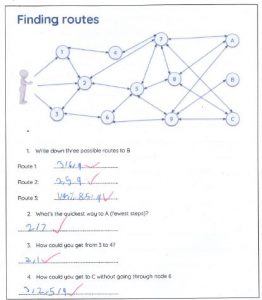
Objectives
Early years (see also Early Year’s Policy)
It is important in the foundation stage to give children a broad, play-based experience of IT and computing in a range of contexts, including “Barefoot” activities and outdoor play. Computing is not just about computers. Early years learning environments should feature IT scenarios based on experience in the real world, such as in role-play. Children gain confidence, control and language skills through opportunities such as ‘programming’ each other using directional language to find toys/objects, creating artwork using digital drawing tools and controlling programmable toys. Outdoor exploration is an important aspect and using digital recording devices such as video recorders, cameras and microphones can support children in developing communication skills. This is particularly beneficial for children who have English as an additional language.
By the end of Key Stage 1 pupils should be taught to:
- Understand what algorithms are, how they are implemented as programs on digital devices, and that programs execute by following a sequence of instructions
- Write and test simple programs.
- Use logical reasoning to predict the behaviour of simple programs.
- Organise, store, manipulate and retrieve data in a range of digital formats.
- Communicate safely and respectfully online, keeping personal information private, and recognize common uses of information technology beyond school.
By the end of Key Stage 2 pupils should be taught to:
- Design and write programs that accomplish specific goals, including controlling or simulating physical systems; solve problems by decomposing them into smaller parts.
- Use sequence, selection, and repetition in programs; work with variables and various forms of input and output; generate appropriate inputs and predicted outputs to test programs.
- Use logical reasoning to explain how a simple algorithm works and to detect and correct errors in algorithms and programs.
- Understand computer networks including the internet; how they can provide multiple services, such as the world-wide web; and the opportunities they offer for communication and collaboration.
- Describe how internet search engines find and store data; use search engines effectively; be discerning in evaluating digital content; respect individuals and intellectual property; use technology responsibly, securely and safely
- Select, use and combine a variety of software (including internet services) on a range of digital devices to accomplish given goals, including collecting, analysing, evaluating and presenting data and information.
Resources and Access
The school acknowledges the need to continually maintain, update and develop its resources and to make progress towards consistent, compatible computer systems by investing in resources that will effectively deliver the objectives of the National Curriculum and support the use of IT, Computer Science and Digital Literacy across the school. Teachers are required to inform the Computing subject leader of any faults as soon as they are noticed. Resources, if not classroom based, are located in the Computing cupboard. A service level agreement with Telford and Wrekin is currently in place to help support the subject leader to fulfil this role both in hardware & software. Computing network infrastructure and equipment has been sited so that:
- Every classroom from nursery to Y6 has at least 2 computers connected to the school network and an interactive touchscreen board with sound.
- Each classroom contains a set of 30 laptops or Chromebooks.
- There is an iPad Sync & Charge cabinet in school containing 30 iPads. Additionally, each class base also has a mini-iPad for class teachers and teaching assistants to use.
- The school has a 75” portable screen in the hall, for use in assemblies, presentations, group teaching and productions.
- The school has access to a range of hardware to support the NCCE scheme of work, such as BeeBots and MicroBit microcomputers.
- Software and hardware to support the NCCE scheme is regularly updated to ensure that it is compatible and appropriate to suit the pedagogy of each year group.
- Pupils may use IT and Computing independently, in pairs, alongside a TA or in a group with a teacher.
- The school has a Computing technician who is in school 1 day per week (Monday).
- A governor will be invited to take a particular interest in Computing in the school.
Planning
At Woodlands we follow our own bespoke Computing progression document. The school adapts the National Centre for Computing Education “Teach Computing” scheme of work for pupils in Years 1-6. We have also incorporated the Education for a Connected World (2020) material, which is a framework to equip children and young people for a digital life.
Our computing curriculum is spilt into three aspects.
These are:
- Computer Science – the core of computing where pupils are taught how digital systems work and how to use this knowledge to programme. Pupils learn the principles of computation and information.
- Information Technology – the application of using their computer science knowledge to create programs, systems and content.
- Digital Literacy – to use and develop their ideas through IT; use technology safely, respectfully and responsibly; and understand computer networks including the internet. This will enable them to become active members of the future workforce.
Substantive knowledge and disciplinary knowledge is progressive and “chunked” appropriately so that component knowledge builds sequentially to support composite tasks. To support EYFS in vocabulary acquisition and developing computational skills, Barefoot resources are used alongside regular instructional language modelling. Teachers have received training in adaptive teaching to support lower ability or SEND learners and challenge higher ability or G&T learners. Learning from previous units or year groups is regularly recapped to ensure that cumulative disfluency is avoided, and misconceptions are regularly aired and addressed.
Assessment and record keeping (also see Assessment Policy)
Teachers regularly assess progress through observations and evidence. Key objectives to be assessed are taken from the National Curriculum to assess Computing each term. Teachers are encouraged to use Woodland’s progression documents as guides when creating and assessing success criteria. Assessing Computing is an integral part of teaching and learning and is key to good practice. Assessment is process orientated – reviewing the way that techniques and skills are applied purposefully by pupils to demonstrate their understanding of Computing concepts. As assessment is part of the learning process, it is essential that pupils are closely involved. Assessment can be broken down into;
- Formative assessments carried out during and following short, focused tasks and activities. They provide pupils and teaching staff the opportunity to reflect on their learning in the context of the agreed success criteria. This feeds into planning for the next lesson or activity.
- Summative assessment should review pupils’ ability and provide a best fit ‘level’. Independent tasks provide a number of opportunities and scope for pupils to demonstrate their capability throughout the term. There should be an opportunity for pupil review and identification of next steps. Summative judgements are recorded for all pupils on O Track – showing whether the pupils have met, exceeded, or not achieved the learning objectives.
Children’s work in Computing is assessed by making informal judgments as staff observe the children during lessons. Once the children complete a unit of work, staff make a summary judgment of the work for each pupil as to whether they have yet to obtain, obtained or exceeded the expectations of the unit.
Monitoring and evaluation
The subject leader is responsible for monitoring the standard of the children’s work and the quality of teaching in line with the school’s monitoring cycle. This may be through lesson observations, pupil discussion and evaluating pupil work.We allocate time for the vital task of reviewing samples of children’s work and for visiting classes to observe teaching in the subject.
Pupils with special educational needs (see also SEN Policy)
We believe that all children have the right to access IT and Computing. In order to ensure that children with special educational needs achieve to the best of their ability, it may be necessary to adapt the delivery of the Computing curriculum for some pupils. Computing forms part of the National Curriculum to provide a broad and balanced education for all children. Through the teaching of Computing, we provide opportunities that enable all pupils to make strong progress. We do this by setting suitable challenges and responding to each child’s individual needs as well as choosing activities to suit the pedagogy of each year group. Where appropriate, IT can be used to support SEN children on a one-to-one basis where children receive additional support.
Equal opportunities (see also Equal Opportunities Policy)
We will ensure that all children are provided with the same learning opportunities regardless of social class, gender, culture, race, disability or learning difficulties. As a result, we hope to enable all children to develop positive attitudes towards others. All pupils have equal access to Computing and all staff members follow the equal opportunities policy. Resources for SEN children and gifted & talented will be made available to support and challenge appropriately.
Staff training
The Computing subject leader will assess and address staff training needs as part of the annual development plan process or in response to individual needs and requests throughout the year. Individual teachers should continually develop their own skills and knowledge, identify their own needs and notify the subject leader. Teachers will be encouraged to use IT and Computing to produce plans, reports, communications and teaching resources.
Security
We take security very seriously. As such:
- The Computing technician will be responsible for regularly updating anti-virus software.
- SENSO is used to monitor all students and staff.
- Use of IT and Computing will be in line with the school’s ‘Acceptable Use Policy’. All staff, volunteers and children must sign a copy of the schools AUP.
- Parents will be made aware of the ‘acceptable use policy’ from school entry to the end of KS2.
- All pupils and parents will be aware of the school rules for responsible use of IT and
- Computing and the internet and will understand the consequence of any misuse.
Cross curricular links
Staff are aware that IT and Computing skills should be developed through core and foundation subjects. Where appropriate, IT and Computing should be incorporated into schemes of work for all subjects. IT and Computing should be used to support learning in other subjects as well as developing Computing knowledge, skills and understanding. Our school provides pupils with opportunities to enrich and deepen learning using a cross-curricular approach, which embeds Computing in English, Mathematics, Science, Geography and History from Year 1 to Year 6.
Parental involvement
Parents are encouraged to support the implementation of IT and Computing where possible by encouraging use of IT and Computing skills at home for pleasure, through home-learning tasks set through Google Classroom and use of the school website. Parents will be made aware of issues surrounding e-safety and encouraged to promote this at home.
Each term, we focus on one aspect of the computing curriculum. At Woodlands, we strive to achieve a cross curricular approach teaching computing skills in a variety of ways to inspire all aspects of the computing curriculum. This is to allow teaching of new skills to be linked to previous learning, other topics and in real life contexts. As these three strands are of equal importance. To help us facilitate the children’s learning we have utilised the free resources obtained from NCCE.
Here at Woodlands, we recognise that all classes have children with widely differing computing abilities. This is especially true when some children have access to equipment at home, while others do not. We provide suitable learning opportunities for all children by matching the challenge of the task to the ability and experience of the child e.g. Children who are more experienced work in mixed ability groups to support their peers.
By the time children leave Woodlands, we strive to enable our children to become respectful digital citizens and for them to develop their digital literacy and skills to be able to succeed in the modern world as well as to give them the skills that they will need in later life. For our children, to become computer literate, giving them the digital skills they will need to be a lifelong learner in the technological age.
Furthermore, we want to ensure that our children are safe when they are online. That they understand the dangers of online content, understanding and knowing ways to keep themselves safe and what to do and who to tell when they feel unsafe. Moreover, that they understand the impact of these online dangers on both their mental and physical health and know where to go when they need help.
Below are examples of the texts used to support the children’s understanding of computing and keeping safe online.
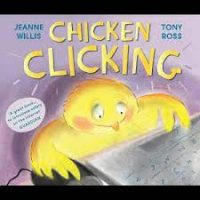 |
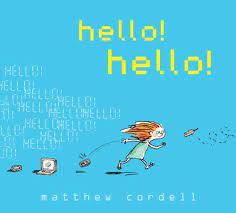 |
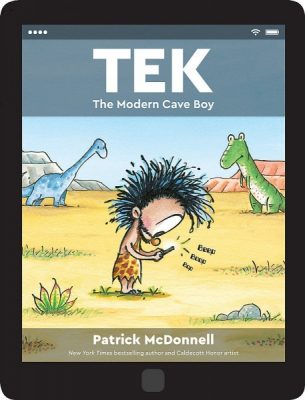 |
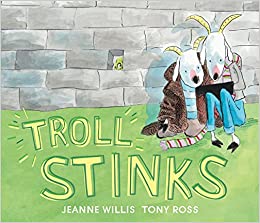 |
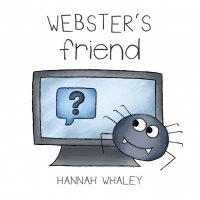 |
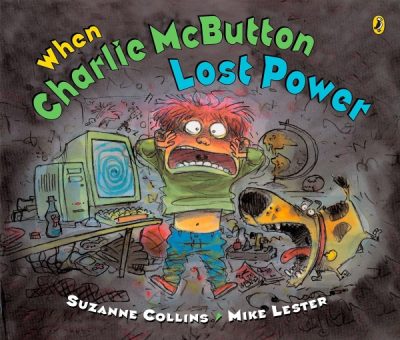 |
Our curriculum is carefully designed to ensure key knowledge and skills progress in a logical and sequenced way, thus enabling pupils to revisit previously taught content and to build upon it year on year. We use carefully structured progression documents to ensure that substantive and disciplinary knowledge and skills are clearly outlined and sequenced, thus enabling the children to know and remember more, as they move through school.
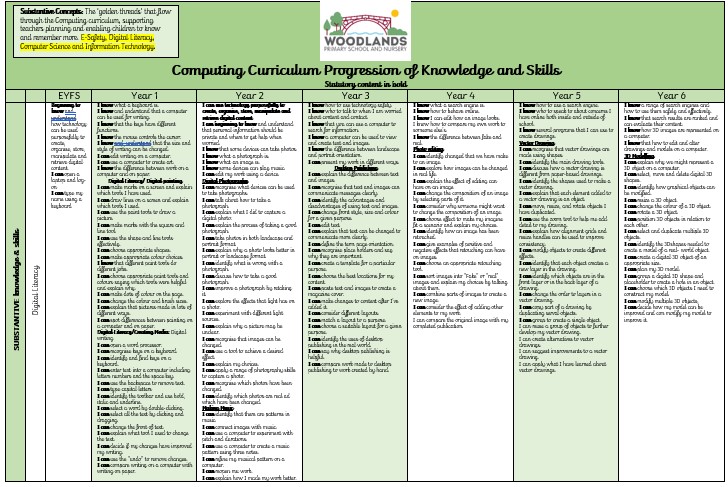
computing overview 2024 25.pdf
Intent
In our rapidly evolving technological world, Woodlands Primary School recognizes the importance of teaching Computing from an early age. We understand that future generations will depend on their computational confidence and digital skills to succeed in their chosen careers.
Our goal is to equip children with the necessary skills and knowledge to understand the three core areas of Computing: Computer Science, Information Technology, and Digital Literacy. We aim to provide a broad and balanced approach to quality first teaching in this subject.
Computing is a vital part of a child's education and daily life. Therefore, we strive to help our pupils grasp the core principles of this subject through engaging and cross-curricular opportunities.
The teaching objectives for Computing at Woodlands Primary School are:
· To foster enthusiasm and appreciation for Computing through engaging and well-planned lessons, enabling children to use their skills to create and develop new ideas.
· To develop a scheme of work, aligned with the National Curriculum, that ensures progression and a breadth of knowledge across all year groups.
· To ensure teaching staff have access to relevant CPD opportunities to deliver sessions confidently and identify ways to integrate computational skills across the curriculum.
· To provide real-world examples and creative challenges that allow pupils to explore and deepen their understanding of Computing's fundamental principles and concepts.
· To support children in becoming competent Computational Thinkers by integrating these core concepts and approaches throughout our school ethos.
· To promote a respectful and responsible attitude towards using information and communication technology, particularly regarding their own and others' safety.
· To create a safe environment where pupils can navigate and interact with the digital world while exploring their personal expression and identity.
Implementation
To achieve our goals, the Computing curriculum is regularly reviewed through monitoring and evaluation by the Subject Leader and Senior Leadership Team. Teachers show great enthusiasm for the subject and set high expectations for pupils, guided by the subject progression grid, which focuses on three core areas of Computing:
· Computer Science: Understanding coding and programming across various physical devices and digital resources.
· Information Technology: Developing skills to operate and manipulate specific programs, systems, and content.
· Digital Literacy: Learning to use technology safely and evaluating potential risks in the online/digital world.
The National Curriculum forms the foundation for our progression grids, supplemented by additional resources such as NCCE, STEM, Education for a Connected World and Amazing ICT. We also participate in 'Internet Safety Week,' providing age-appropriate texts and tasks for each class. Cross-curricular opportunities are identified to integrate Computing with termly topics, ensuring it is not seen as a standalone subject. Staff are encouraged to share any gaps in their knowledge to inform tailored training and CPD.
In our Computing teaching, we expose students to a variety of software, programs, and equipment to offer diverse challenges and experiences. Specific vocabulary for each year group is outlined in the progression grid and regularly modelled by teachers. Spaced repetition and chunking in the curriculum help pupils recall embedded knowledge, ensuring each year group works on core aspects of the three Computing strands. Sessions are adapted to meet the needs of specific cohorts, and lesson content is frequently reviewed by class teachers and the subject lead. Our schemes of work remain flexible, and children share their thoughts on their 'computing learning journeys' to help tailor sessions to their interests and needs.
Impact
In Computing, we foster a creative and collaborative environment where pupils can express themselves and tackle challenges. The curriculum's success is evaluated through yearly progress data analysis, regular pupil voice sessions, lesson observations, and skills audits. These assessments inform future adjustments to the schemes of work, ensuring evident progression throughout the school.
To demonstrate our achievements, pupils at Woodlands Primary School should:
· Be enthusiastic and confident in their approach to Computing.
· Present as competent and adaptable 'Computational Thinkers' who apply identified concepts and approaches across all areas of learning.
· Identify the source of problems and work persistently to 'debug' them.
· Create and evaluate their own project work.
· Have a secure understanding of the positive applications and specific risks associated with a broad range of digital technology.
· Transition to secondary school with a keen interest in continuing their learning in this subject.
